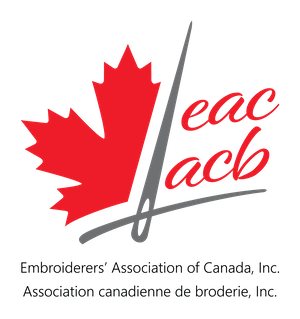Rosemary Marchant: Narrative Embroidery
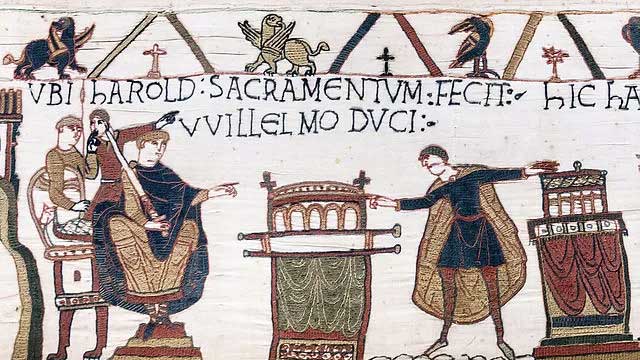
Rosemary explained that narrative embroideries are also made by ordinary people who want to record something important to them through stitching, sometimes with text to help tell their story.
Blue is for Recycling II

by Marcella Pedersen, Regina Stitchery Guild This printed cloth was a garage sale item I picked up that was partially completed. I think I picked this up because of my Belgian heritage, though this might be a Dutch couple. Once I started working on it, I could see why the item wasnât finished. As you see in the picture of the partially finished piece, the print on the material has cross stitch guides that are not the same size; some lines are narrow, and some large. Not to be done in, I took up the challenge to finish the piece, but it is definitely the worst embroidery piece I have ever finished. I thought all cross stitches were equal. I am still not a fan of cross stitch embroidery.
Blue is for Recycling I
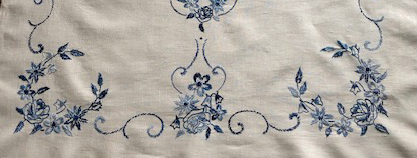
by JosĂ© Hope, Embroiderersâ Guild of Victoria & Arrowsmith Needle Arts Guild Blue can conjure up thoughts of our beautiful west coast skies or ocean waters in summer but in my heart, I always think of Delftware. This may be my heritage or just childhood memories of my parentsâ home. When I found an unfinished tablecloth in one of our local thrift stores, I knew right away what I wanted to do with it. It had been started with one motif partially stitched in six-strand floss, such a shame on this beautiful polished cotton fabric. I carefully unpicked the previous ownerâs work and began surface stitching with three-strand variegated blue DMC floss. The joy and peacefulness of bringing an unwanted treasure to life warms my heart. This beautiful tablecloth will reside not in a drawer but on my table so it can be enjoyed by all who visit me. At present, Iâm stitching another tablecloth rescued from the second-hand shop, titled Blue Onion (top right), which is larger and from the 1970s. It is stamped cross stitch in two shades of blue!
My Blue Table Runner
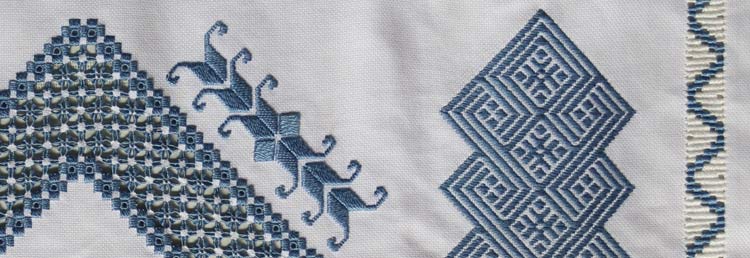
by Nancy Tozer, Lakeshore Creative Stitchery Guild/La Guilde des travaux Ă lâaiguille du Lakeshore, Virtual Threads, and Ottawa Valley Guild of Stitchery I joined the Lakeshore Creative Stitchery Guild/La Guilde des travaux Ă lâaiguille du Lakeshore when I was still working full time. Regular meetings and classes took place weekly on Thursdays; there were no evening stitching groups at the time. So, I decided to enroll in EAC/ACBâs Basic Counted Thread correspondence course. The final project in lesson six was to stitch a sampler on evenweave fabric. The sampler was to include a hemstitched border, mitred corners, and two of the four techniques covered in the course. I chose pattern darning and Hardanger. I used several Ukrainian embroidery books as sources of inspiration, instruction, and reference. I embroidered the table runner in blue thread on white fabric to complement my home dĂ©cor. I chose DMC 334 because it was available in floss, pearl cotton #5, and pearl cotton #8. I used the floss for the pattern darning motifs and the pearl cotton for the Hardanger section and needle woven border. Inspiration for my design started with the pattern darning motif. I found the motif on the sleeve of a Ukrainian blouse and immediately knew that I wanted to stitch this. I embroidered the design using the Ukrainian technique perevolikania and six strands of DMC floss. The central design illustrates the Hardanger technique. It consists of a medallion surrounded by a band of Greek crosses (a woven filling stitch used in Hardanger embroidery) and satin stitch motifs. Hardanger satin stitching is similar to the Ukrainian lyshtva stitching technique. The Greek cross band was inspired by designs in Janice Loveâs Hardanger: Fundamentals Made Fancy. I mitred the corners and hemmed the edges using antique hemstitch, called prutyk in Ukrainian embroidery. The needle weaving pattern was inspired by the border on a Schwalm pillow. It consists of half diamonds in white separated by a step pattern in blue. I stitched this using the Ukrainian technique of latana merezhka. My table runner turned out to be a very large, ambitious project, taking me four months to complete. Fortunately, my course counsellor, Colleen Darling, was very understanding as my last lesson was quite delayed in being sent to her for evaluation. As I was designing and stitching this piece, I found it very interesting to note the similarities between Ukrainian stitching techniques with those found in other countries. It seems that the art of embroidery knows no boundaries, with designs and techniques shared amongst needleworkers the world over. My blue table runner won the âBest of Classâ award in the Hardanger, Lace, Pulled and Drawn Thread â Original Design category at Seminar 2000 in Moncton, New Brunswick.
Memories
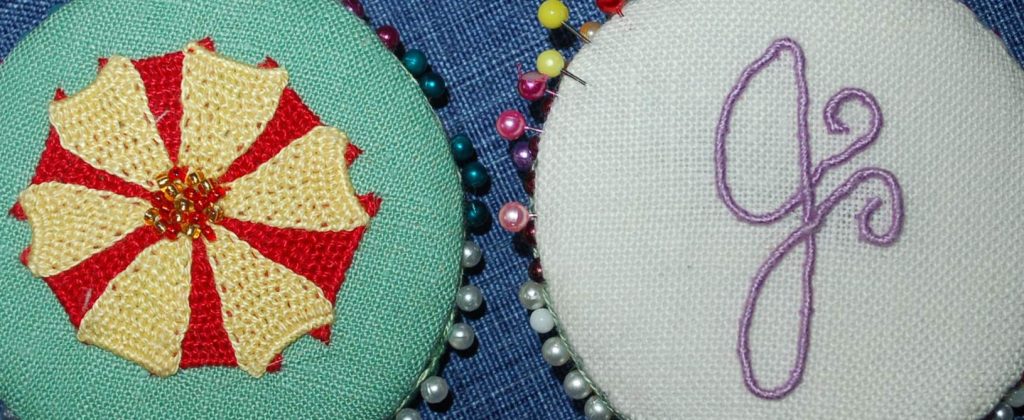
by Odette Gaudet, Chickadee Chapter of Needle Arts âMemoryâ is defined as the power of remembering; the time during which past things can be remembered; that which is remembered (Highroads Dictionary, 1963). âRememberâ is defined as to call to mind; to keep in mind; to use the power of memory; to recollect. Most often, we think memories are only of the past, something that happened long ago. Memories can have a place in the present and future. Chickadee Chapter of Needle Arts had two active members pass away. Susan Pickett at age 65 in November 2013, and Helen Crawford at age 88 in June 2015. As a small guild, this was extremely sad and hard as both women played a strong role in our group. Susan Pickett loved Hardanger. She stitched incredibly beautiful pieces. Her legacy project of stitching a piece for each family member at her passing was incomplete. Guild members finished the remainder. What we learned has been invaluable. Sue liked to change one thing. She would change one colour, for example, white thread on red fabric or blue thread on white fabric. The results were always stunning. She would also change the size or shape. If the piece were square, sheâd make it a rectangle. Changing one or two elements can completely alter the look of a project. Itâs a great lesson going forward and applies to other projects and life. Helen Crawford loved to stitch. She especially loved cross stitch and mill fabric from Humphrey Textiles, a textile mill in Moncton. The mill plant made fabric of 18-count that was most often used on cubicle wall dividers. When Helen was younger, she could buy a large bag of remnants for five dollars. She stitched everything on this fabric. She made one of everything for each member of her family â pillows, afghans, placemats, wall hangings, bell pulls, coasters, table runners, and ornaments. Anything you can imagine until family members said, âStitch for yourself, we have enough.â The year before her death, Helen talked about framing the stitched pieces she had finished. I volunteered to help her complete this project. Unfortunately, Helen passed away before we could finish this. Her stash was then passed to her sister, whom I met at the funeral, and we became friends. At the end of 2016, I helped Helenâs sister frame the finished pieces. She then gave one to each of their family members. Even though the family, years before, said, âenough,â being surprised with a final piece by Helen was emotional and meant a great deal as no more will ever be made. Helenâs lesson on stitching is a strong message. You do it because you love it. We put ourselves into what we do, and what we do feeds our souls. Why not fill it with love for those around us and ourselves? In both Susanâs and Helenâs cases, much of their stash was given to our chapter. We sorted through the patterns for future programs. Raw materials were saved for the same purpose. We hosted a tea party in their honour and a stash share, where guild members could come and take any part of the stash home to enjoy. Any remainder was sent to another guild. As part of the Chickadee Chapter of Needle Arts program, we have hosted several projects in their memory. We made Casalguidi pin keeps with Susanâs green fabric. We made flowers on one side and our initials on the other. Susan had white linen that we used to stitch a Schwalm needle case designed by JosĂ© Hope. We were also able to host an afghan class from Helenâs stash. Our 2021 summer challenge was âhostedâ by Helen, making a household item from her fabric supply, using a variety of patterns supplied. Memories are funny. When we miss our friends and family we are often filled with sadness and grief. If we only focus on these thoughts and feelings, we are left in a void of misery. Other times memories give us comfort and joy. Choose what youâll feel, by choosing where your focus goes. Choose love, fun, and happiness, for yourself. Having stitched pieces with fabric from Susan and Helen is a way to keep them and their memories close. They havenât really left us. The lessons they taught us and the example they lived are with us. I can hear them when Iâm starting a new project. Do I love it? Will I learn something? Can I change one thing that will make it âmeâ? Most importantly, love what I do and those around me. Life is a full experience waiting for us to embrace. How will you embrace it today?
More 15-Sided Biscornus
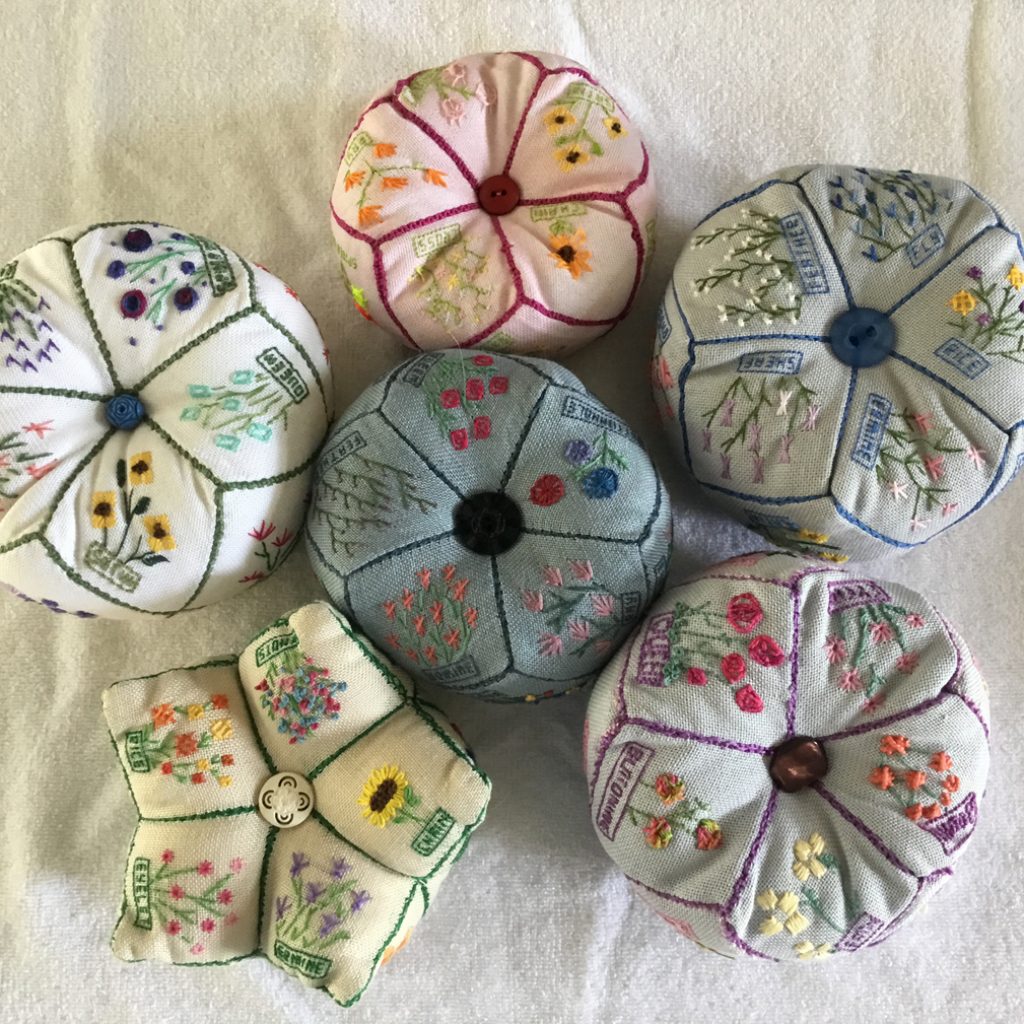
different background fabric and thread colours, and each person’s placement of the flowers make each biscornu unique …
The Edmonton Needlecraft Guildâs Virtual Spring Fling: A Delightful Way to Spend a Weekend!
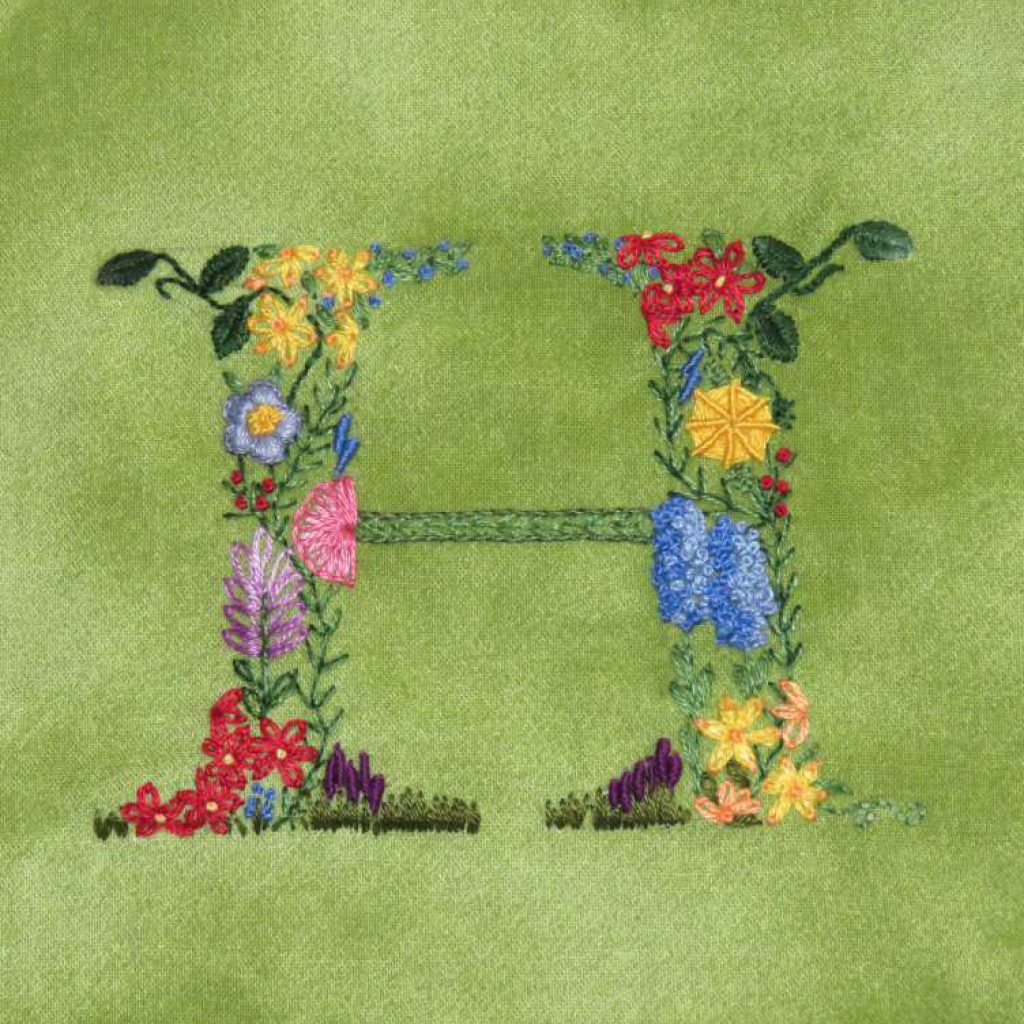
Hear about ENG’s Virtual Spring Fling from Patty Hawkins
Members Share 15-Sided Biscornu Finishes
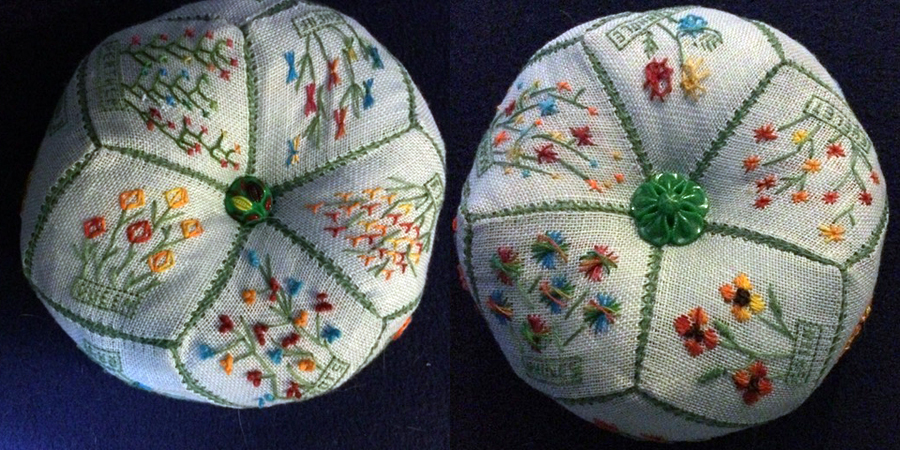
See the beautiful colour choices and a unique finishing option on this project!
Mary Will Follow Along with Photos
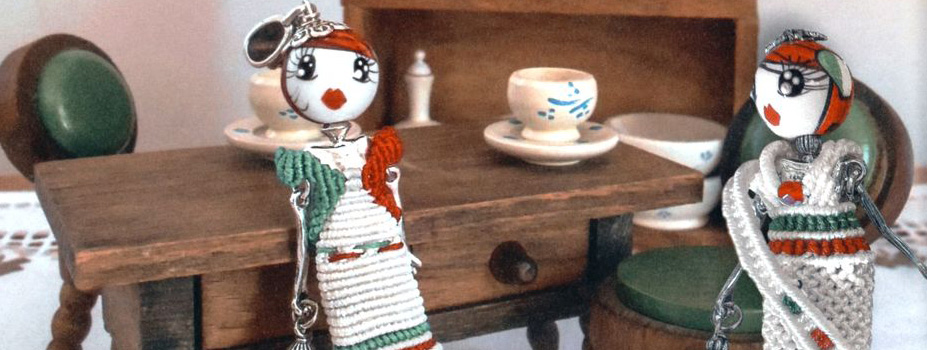
submitted by Mary Wahl I have lived in Canmore, Alberta (about an hour west of Calgary in the Rocky Mountains) for almost five years. Before that, I lived in Toronto and was a devoted member of the Toronto Guild of Stitchery for many years. I remain a member of EAC/ACB. I was one of the lucky ones to receive an issue of Giuliana Ricama magazine. I have been thoroughly enjoying the pictures of beautiful embroideries with photographic instructions in the issue. I have had some difficulty understanding the written instructions. This includes materials lists where I could not translate fabrics and thread requirements to the supplies readily available here. However, I can do a lot with pictures. I love the little Italian dolls. I am a cloth doll maker and may allow them to inspire me in the not too distant future. It was easy for me to relate to the article by Kiyoko Miyagoshi, which featured the chrysanthemum pattern for temari balls. That was the first pattern that I learned how to do with EAC/ACB member Peggy Kimble years ago. Since then, I have made many different patterns, most quite complicated. I have included some in my photograph. I purchased a Japanese book of temari patterns in Matsumoto, Japan, where temari balls are sold in the castle and are featured in the sidewalk grates! I cannot read the book but all I have to do is look at the pictures. I prefer using Styrofoam balls in order to have fairly perfect spheres. The size of the balls does not matter â everything is proportional. I fit them with quilt batting or something soft before winding on the background colour thread. The Japanese like to use all sorts of bits, fabric and otherwise, to form their balls.
Michele Would Choose Casalguidi
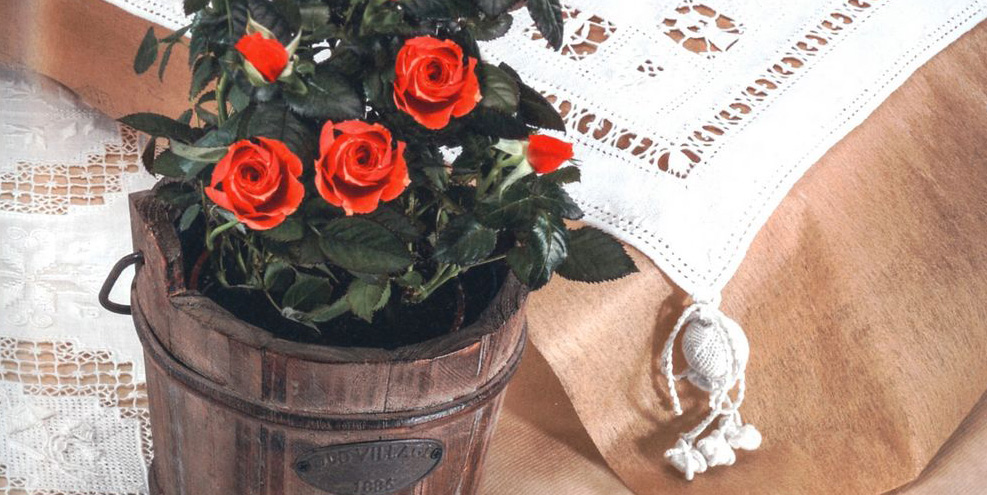
My name is Michele Young and I live in southern Ontario. I was delighted to be a winner of a copy of this high-quality needlework magazine, Giuliana Ricama. The contributorsâ works are displayed in such a way that I immediately want to find a needle and thread and begin working on all of the projects. The pictures are gorgeous and the instructions and traceable designs make this magazine a fantastic resource and a treasure. It was hard to choose a favourite project, but I decided upon the Casalguidi centrepiece with tassels because it contained many traditional, but new to me, stitches I will enjoy learning. The project I am working on in the photo is an Alison Cole goldwork and stumpwork design, both new techniques for me, until I took her class at the EAC/ACB seminar in 2018. I will enjoy sharing this magazine with the members of my guild but will take careful note of who borrows it because I will definitely want it back. Thank you for the prize and for the opportunity to review Giuliana Ricama.
Lexa’s Thoughts on Giuliana Ricama Magazine
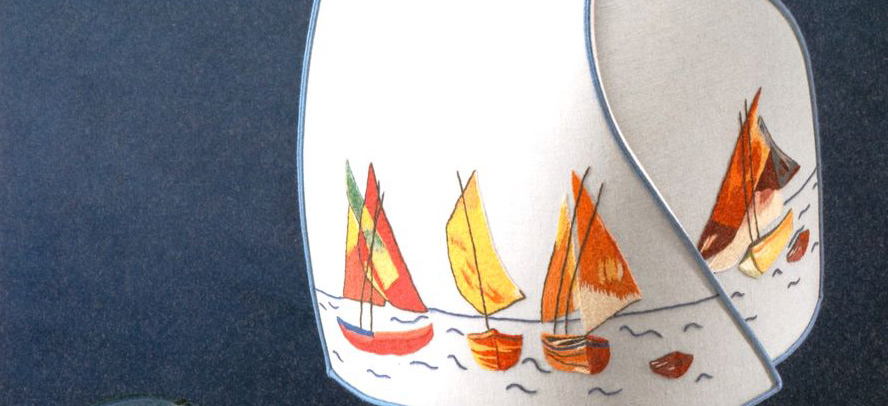
submitted by Lexa Shaw, Embroiderersâ Guild of Victoria I was quite surprised to win a copy of Giuliana Ricama magazine. Another member of my guild was also a winner. She is now looking into the possibility of ordering the magazine as a group rate. I took the issue to my stitch group to show them. I am sitting at the end of the table and the others are some of the group which meets on a weekly basis. This is an interesting magazine. It is organized quite differently from the North American/British ones I am used to. There are multiple examples of how each of the âprojectsâ could be done. The explanations then give a very basic description of the pattern needed. There are also a couple of techniques that are described in detail. The articles are very interesting and informative. There appears to be many more âschoolsâ teaching traditional embroidery than here. Overall, this is a lovely magazine that is aimed at the confident stitcher. The diagrams are clear and easy to follow. My favourite item to stitch would be the Colours of Versilia used in the African women project. This magazine will now be circulated in the guild for other stitchers to peruse.
Adele Tells Us about Giuliana Ricama
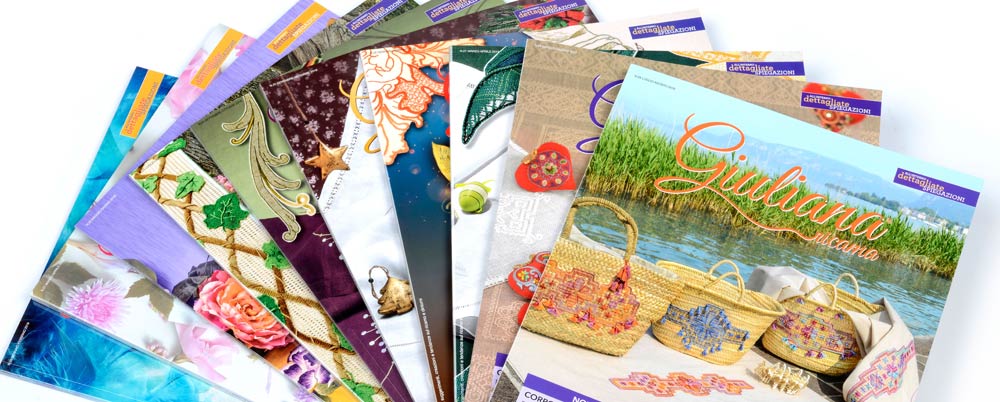
submitted by Adele Mandryk My name is Adele Mandryk and I live in western Canada in the city of Edmonton, Alberta. What a delightful surprise to learn that I had won a copy of Giuliana Ricama. So far, I have read the magazine twice and was thoroughly entertained both times. I particularly enjoyed reading the article on Casalguidi embroidery as I have often wondered what exactly it is that makes this form of whitework, âCasalguidi.â Aside from explaining the history and characteristics of this very old technique, the article illustrated the particular stitches used and then a companion piece showed how various Italian embroidery clubs are modernizing this traditional technique. A bracelet, a purse and a pair of shoes featuring black Casalguidi embellishments on ecru ground fabric were stunning. I was also quite taken by a pair of curtains stitched using coloured threads and the Caterina deâ Medici embroidery technique, a form of counted work on very fine linen fabric that I had not heard of before.  This magazine is translated from Italian to English and poses a bit of a challenge in understanding some embroidery terminology used in project instructions. For instance, in one article, âcordâ was used for the more commonly used word âthreadâ which was a bit confusing until I realized my mental picture was âoff.â However, there was a certain amount of satisfaction in âgooglingâ unfamiliar stitch names and finding, in one case, that it was merely the buttonhole stitch âdressed upâ as the festoon stitch. I very much enjoyed the gentle mental exercise required and the excellent close-up photography helped. This magazine is more than just a project magazine. It offers historical context and insight into modern-day Italian embroiderers. In the photo, I am holding my first attempt at counted needlepoint embellished with silk ribbon embroidery. The project, called âFuchsias and Champagne,â was designed and taught by Merrilyn Heazlewood through the Embroiderersâ Association of Canada/Association Canadienne de Broderie. I plan to finish it as a bell pull and gift it to my Mother on her birthday. Thank you to EAC/ACB and the publishers of Giuliana Ricama for the opportunity to add a beautiful embroidery magazine to my library that I know I will come back to many times.
